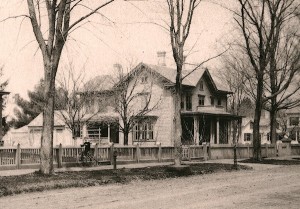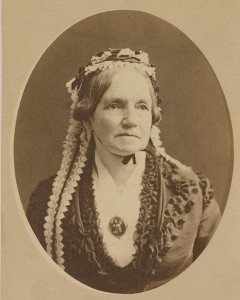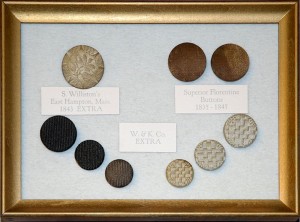Each fall Archivist Rick Teller ’70 speaks to the assembled School on some aspect of Williston Northampton history. The event, popularly known as “the button speech,” only occasionally concerns buttons at all. But this year it did. These remarks were delivered on Friday, September 20, 2013.

Good morning. At solemn occasions … like hockey games … we sing about someone named “Sammy.” Our hearts yearn for him … for his campus and geriatric elm. But, you might well ask, about whom do we sing? Just who was “Sammy?”
Samuel Williston was born across the street, in a house located where the Homestead now stands. The house, where Mr. Swanson lives and which we now call “The Birthplace,” was moved across Park Street in 1843. It is much grander now than it was when Sam arrived.
That was in 1795. George Washington was President. Easthampton was a small farm village. Samuel’s father, Payson Williston, was the minister in Easthampton’s only church. Payson was a stern, old-fashioned New England preacher, with strong Calvinist leanings. We will get to Calvinism in a minute. The Reverend Mr. Williston’s salary was tiny, and he had a house full of children. He added to his income by planting a few acres of mediocre farmland. That farm is now the heart of our magnificent campus.



